Javea (Xabia)
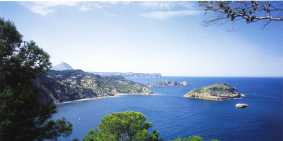 |
Nestling between the capes of San Antonio and La Nao,
the town of Javea, or Xabia, lies on the northern section of the Costa
Blanca, bathed by the Mediterranean and protected from the continental
winds by the Montgo mountain barrier. With its variety of landscape,
ranging from sandy coastlines to rugged mountain areas, its mild year-round
climate, its careful planning and zoning policies and extensive tourist
facilities, Javea is a jewel on the Costa Blanca which has preserved
all the charm of an ancient fishing village. |
|
|
|
| From north to south, the capes of San Antonio, San
Martin, Negre and La Nao crown the coastline, creating a series of
secluded coves blanketed with white, sun-bleached gravel. You can
choose between the busy beach of El Arenal, in the center of the bay,
or the quiet Granadella cove, ideal for scuba diving or snorkeling;
commune with the elements on the nudist beach of Ambolo, or discover
the secrets of the Pope o Tango, Barraca, Falsia and Caleta coves...
|
 |
|
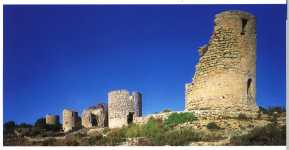 |
The gentle waves separate the coast from the picturesque
islands of Portichol and Descubridor out to sea, and sculpt the
fabulous caves of Orguens and Tallada. Perched on mountain tops
are the remains of ancient watchtowers, reminding us today how attractive
this region was for Berber pirates of old.
|
|
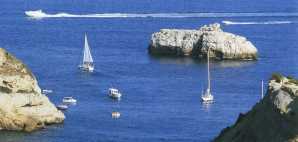 |
Farther inland, the huertas and vineyards cover the
country around Javea, speckled here and there with
farmhouses showing their typical riu-rau silhouettes, with
characteristic arched porches used for drying grapes to make the region's
famous raisins. |
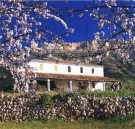 |
|
| To the north, the natural park of Montgo rises up to
753m above sea level, nurturing one of the most valuable botanical
reserves in the Land of Valencia. A journey up the slopes shows a
wealth of different vegetation and provides extraordinary panoramic
views from the top. |
|
|
|
|
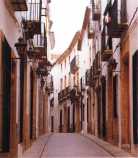 |
Medieval echoes resound throughout the ancient town
center, which has been largely conserved down through the centuries.
White house fronts adorned with wrought iron grilles and Gothic style
windows provide a noble touch to the labyrinth of streets and diminutive
plazas. The Gothic fortified church of San Bartolome dates from the
15th century and is listed as a national artistic monument. Its massive
bulk, half religious, half military, surges up above the web-like
pattern of streets. In the Archeological and Ethnographic Museum,
occupying a nearby Gothic palace, you can see some of the n~ateria1
remains of Javea's history. |
| The importance of the town's maritime activities
can be seen in the picturesque port zone, known as Aduauas de Mar,
or the sea customs". Dominating the fishing port is the modern silhouette
of the church of Nuestra Senora de Loreto; with a roof imitating a
ship's hull. Outside the town, following the road to the San Antonio
cape, the architectural sites include the monastery of Nuestra Seņora
de los Angeles, a series of small hermitages clutching the slopes
of the mountain and some ancient windmills. |
|
|
|
|
Javea has one of the most attractive seaports along
the Mediterranean, due both to its location and to its unsurpassed
fishing and sports installations. The modern Nautical Club at the
sports marina has 297 berths and facilities for all water sports.
Sailing, fishing, nautical supplies, scuba diving, water skiing, windsurfing,
etc. And only six kilometers from town, surrounded by pines and orange
groves, is the Javea Golf Club, offering a pleasant setting for golfers.
A number of sports clubs and associations in the area promote tennis,
horse riding, mountain climbing, cycling, shooting and even pigeon
racing. |
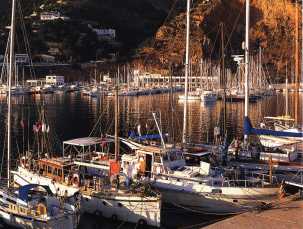 |
|
|
| Fiestas |
| A benign climate, a fertile land and a beautiful sea
seem to have worked wonders on local characters. People in Javea are
easy-going, openhearted and hospitable, and locals seem to have time
enough for work without forsaking their leisure and festivities. Their
motives for creating a stir are manifold: a long history, a feel for
the religious and a penchant for pageantry. From April 28th to May
3rd, Jesus the Nazarene must be honoured, and from September 1st to
8th the patroness Our Lady of Loreto is the object of devotion. On
Midsummer Night, the entire town is bathed in fireworks and colour
to welcome the summer with the Foqueres de Sant Joan, and the Second
fortnight of July is another occasion for feasting, dancing and parading
to the strains of gunpowder and music with the feast of the Moors
and Christians. During the rest of the year, there are other lesser
occasions for merrymaking, celebrations and sports competitions to
keep the Mediterranean spirit on the move. |
|
|
|
|
In addition to the extensive international choices,
you'll find a selection of the best local cuisine at any of the numerous
restaurants in Javea. Rice dishes, serving as the basis for midday
meals, come in a wide variety of styles: arroz al horno (oven-baked
rice), arroz coucostra (topped with a "crust" of omelette), arros
amb fesols I naps (with beans and turnips), and the famous local arros
a la marinera (fisherman's rice).
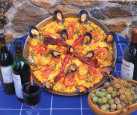 |
Freshly caught fish are used in succulent dishes
such as cruet de peix (a fresh fish and prawn stew) and suc
de roig, or crisply fried in a fritura. Locals also salt or
dry their catch to make salazones of anchovy, tunny, bonito
or thesavoury borreta de melva - excellent as appetizers. Pizza-like
coques de pebrera I tomato and traditional sausage preparations
complete the typical offerings, which include pumpkin and almond
pastries (buņuelos de calabaza, pastissets d'ametla) for the
sweet-toothed. |
|
|
|
| What to do |
|
· See some beautiful panoramas over the Mediterranean
from the pine trees crowning the cliffs of the capes of San Anktonio
and La Nao.
· Sailors will want to comb the coast and let down
the anchor in a quiet, scenic cove to have a refreshing swim.
· At sundown, it's time to visit the Lonja del Pescado,
the fish exchange, and see a traditional auction, or enjoy the refreshing
sea breeze at a terrace cafe along the beach.
|
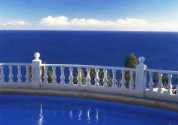 |
|
|
| Where to go |
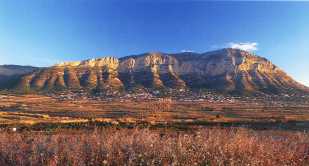 |
·Tour the quiet pueblos and ancient Moorish settlements
in the hills of the interior of Alicante province: Vall d'Ebo, Vall
d'Alcala, Vall de Gallinera, Vail de Laguart...
(50km).
· Visit Gata de Gorgos and see what the local craft
industries have to offer: esparto, palm leaf, rattan and wickerwork
articles (8km).
· Discover avant-garde art movements at the Museum
of Modern Art, the IVAM, in Valencia, or the magnificent collection
of abstract art in the Eusebio Sempere Museum in Alicante (100 or
80km).
|
|
|
|
|
| The international airports of L'Altet (Alicante), at
90km, and Manises (Valencia) at 105km provide links to major European
capitals. The A-7 Motorway runs north-south a few kilometers from
the coast, with junctions 62 and 63 connecting to Javea. The N-332
from Valencia to Alicante passes through Gata de Gorgos, from which
the A- 134 branches off to Javea. A daily bus services provides connections
to Valencia and Alicante. |
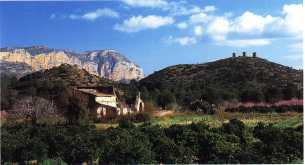 |
|
| The international airports of L'Altet (Alicante), at
90km, and Manises (Valencia) at 105km provide links to major European
capitals. The A-7 Motorway runs north-south a few kilometers from
the coast, with junctions 62 and 63 connecting to Javea. The N-332
from Valencia to Alicante passes through Gata de Gorgos, from which
the A- 134 branches off to Javea. A daily bus services provides connections
to Valencia and Alicante. |
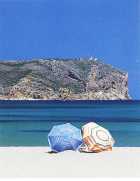 |
|
|
|
| |











